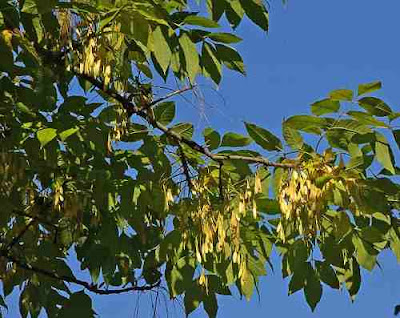The
native Alder is a moderately-sized tree with a narrow crown and short,
spreading branches and grows in moist places, usually alongside streams, river,
ponds and lakes.
Its
winter buds, borne alternately o reddish-brown twigs which are rather tacky in
their green state, are distinctly stalked and have a purple waxy bloom. The
alternate leaves ( about 2-3 in broad and long) are either round or slightly
obcordate, they are dark green, have a toothed margin, and are slightly tacky
as they unfold, hence the specific name, glutinosa, sticky. Both sexes
of flowers are borne on the same tree, before the leaves open. The male catkins
are oblong, drooping, purplish or reddish-brown becoming yellow, and about an
inch long. The female catkins are small, cylindrical and purplish-brown, after
pollination they enlarge to a green oval or spherical shape, later becoming a
brown woody cone-like structure about half an inch long, which opens during the wintr permitting the
numerous small winged seeds to escape. Many of the empty ‘cones’ persist on the
tree well into spring. At first the bark is fairly smooth and greenish-brown,
but later becomes fissured and dark grey. A height of over 75 feet can be
attained, the tree is usually harvested before this, whereupon coppice shoots
arise from the stool.



























































